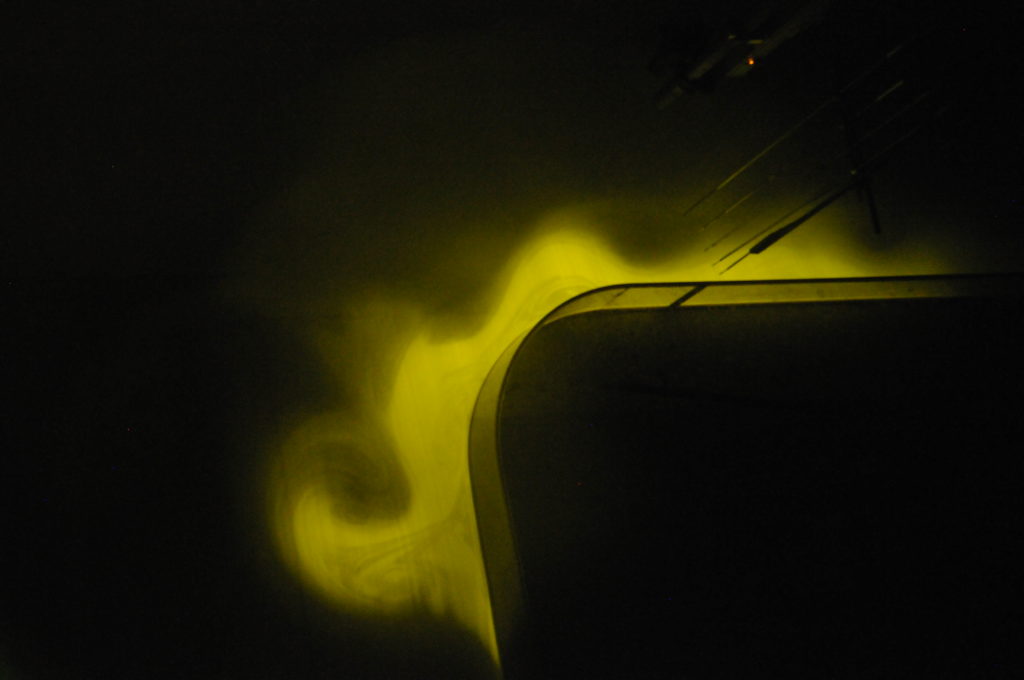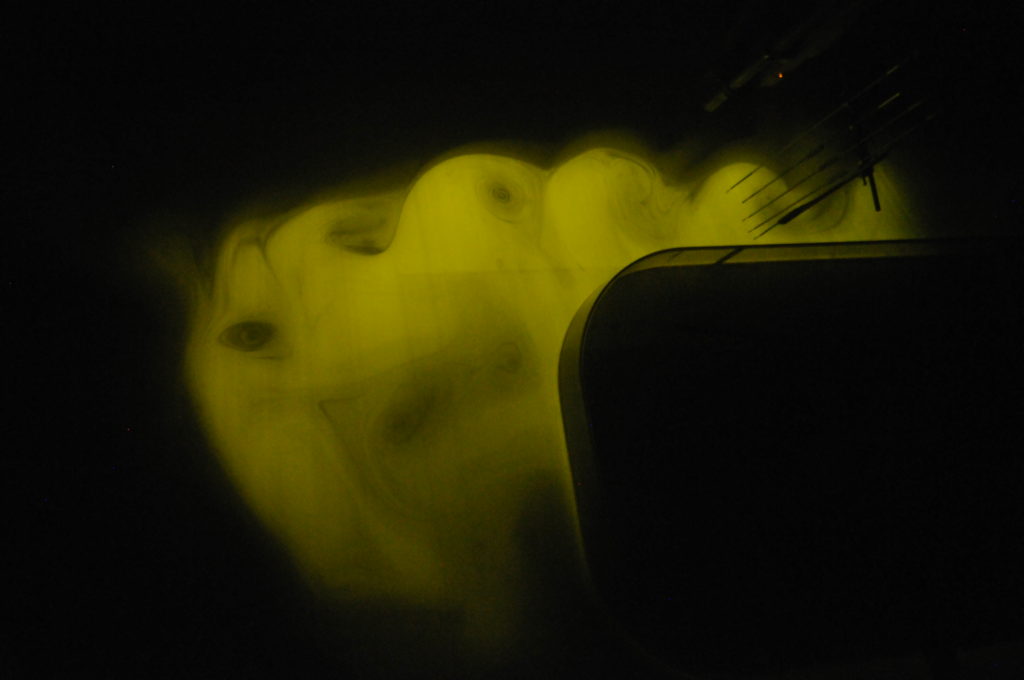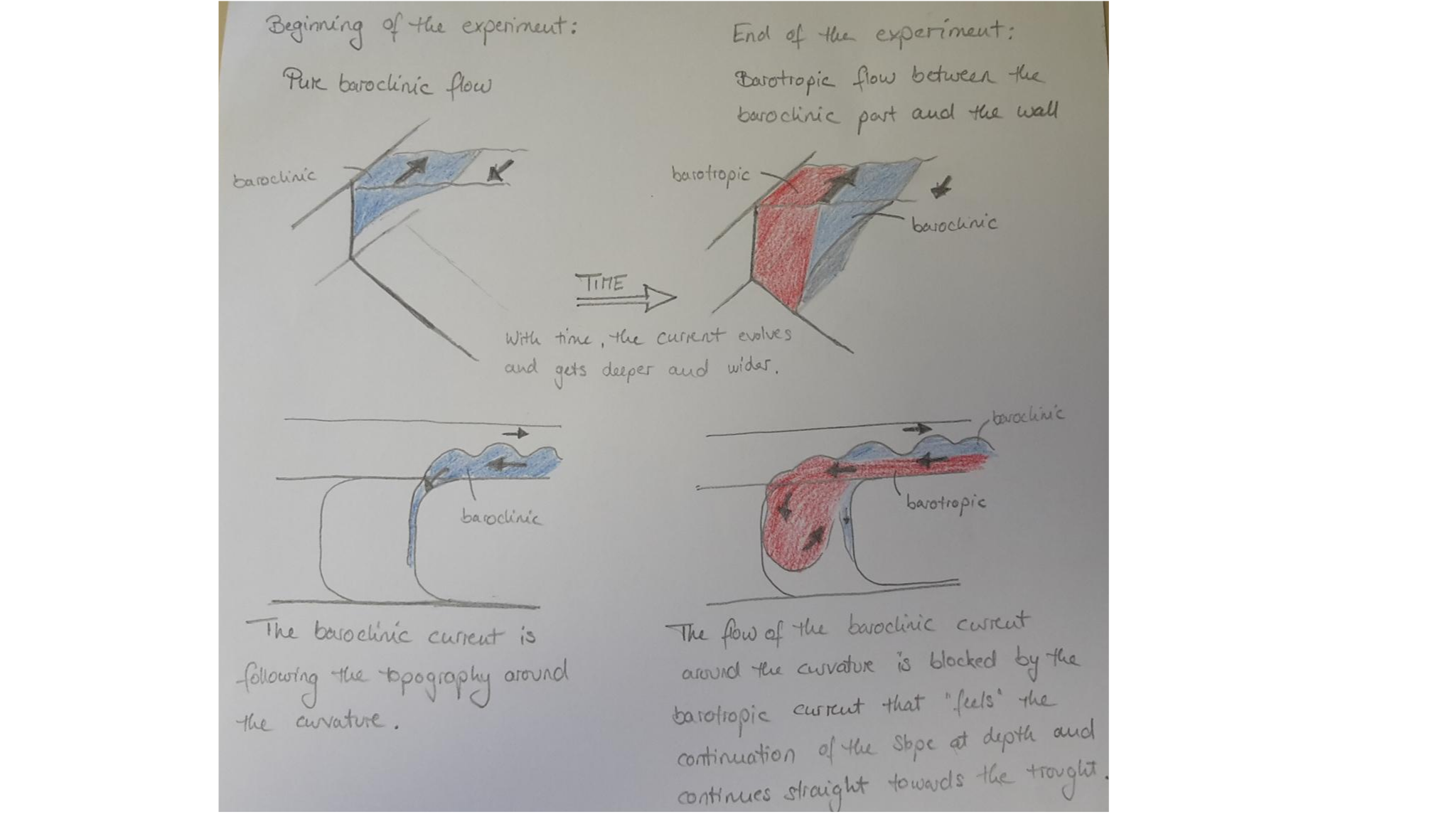As promised last week, here are some photos of the shining flow that contains fluorescent dye. To remove the green light from the laser, we used the polarized safety glasses that only left the illuminated current. Isn’t it pretty?


Whether the flow resembles the first photo or the second photo mainly depends on the strength of the inflow and the density difference between the inflowing and the ambient water. But the flow also evolves with time! That means, in the beginning the freshwater flow turns directly around the first corner, whereas it rather continues straight along the slope after a certain time. Let’s explain that in more details on some sketches:
Does this make sense to you?

